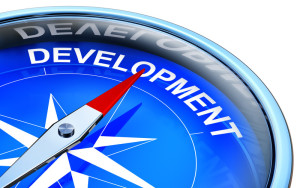One of the primary responsibilities we have as leaders is to develop our people. As leaders we can’t lose sight of the fact that our people are our greatest asset. And we can’t say we’re too busy. It must be a  foundational part of how we work and lead.
foundational part of how we work and lead.
Succession planning may be a formal program at your organization. Or it may be something informal that you just know you needs your attention. After all, you won’t be there forever. You owe it to your organization and your team to have some form of a succession plan.
As leaders, we didn’t get to where we are without the support and investment of others who came before us. It’s up to us to develop the next generation of leaders. Here are 7 actionable ways to support your commitment to the next generation of leaders.
Find out what their goals are – This is especially important if you have come from outside the organization and one of your direct reports applied for your position. Don’t pretend this didn’t happen or you don’t know about it. Be proactive and discuss it with the individual(s). Find out their long-term goals, figure out their gaps so they will be ready next time an opportunity comes up, and agree on a specific development plan.
Provide them exposure at executive and senior leader meetings – Technology is pervasive in most organizations. CIOs are routinely being asked to join one more committee or leadership group so IT is involved and represented. Be selective about what you need to attend. For everything else, identify leaders on your team who can add value but also gain experience by being the IT leader involved. Be explicit about what you are doing with the committee or group leader and make sure you have their support.
Assign a department wide initiative – There are always initiatives that cut across the entire IT organization. They may involve new processes with a heavy dose of culture change. Identify a leader who can lead the initiative and develop new skills by leading it. It beats the usual “voluntold” approach. Continue reading

